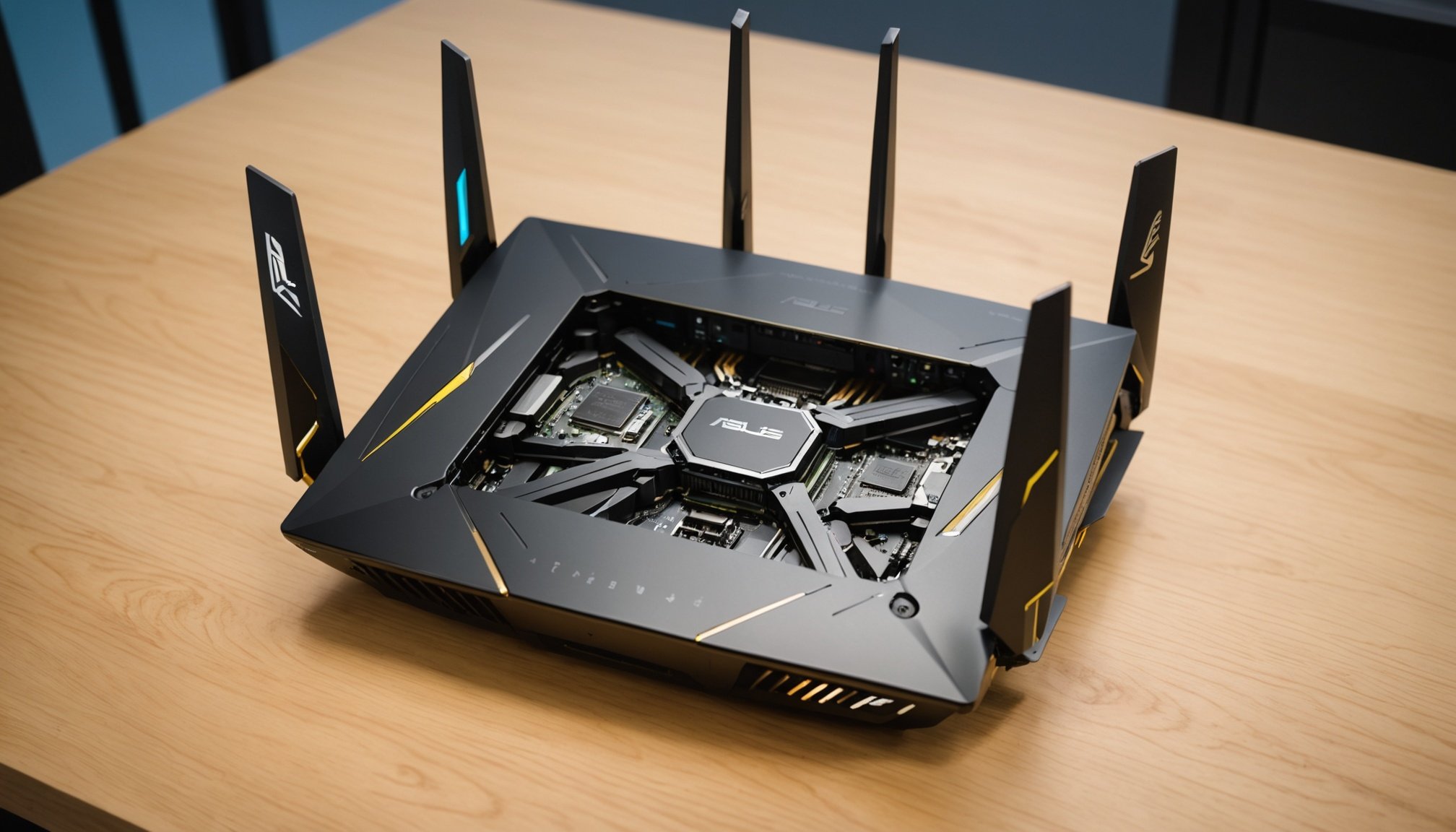Understanding IoT Security Risks
In our increasingly connected world, IoT security risks present a growing concern. These risks often stem from multiple vulnerabilities in IoT devices. For instance, many IoT devices lack robust encryption protocols, leaving them exposed to potential data breaches. Without strong passwords, default settings can be exploited by malicious actors, posing significant security threats.
The implications of unsecured IoT devices extend far beyond individual privacy. Inadequate security can lead to unauthorized access to networks, where attackers can manipulate connected tools for cyber-attacks. This could potentially disrupt critical infrastructure, such as power grids or communication networks, causing widespread harm.
Also to read : Ultimate handbook for creating a secure remote work environment using ubiquiti unifi dream machine
Several notable examples highlight the severity of IoT device threats. In 2016, the Mirai botnet attack hijacked numerous unsecured IoT devices to execute a massive DDoS attack, taking down major websites worldwide. This event underscored the critical need for improved IoT security measures to prevent similar occurrences in the future.
Addressing these IoT security risks involves measures such as regular software updates, improved authentication methods, and user education on best security practices. By understanding and mitigating these vulnerabilities, individuals and organizations can better protect themselves against the evolving landscape of IoT threats.
Topic to read : Comprehensive handbook for setting up a tailored server using proxmox ve for your virtual private server (vps)
Features of the ASUS RT-AX88U for Enhanced Security
Securing your smart home is essential, and the ASUS RT-AX88U stands out with its comprehensive router security features. Built into this powerful device are mechanisms that defend against potential cyber threats, ensuring your network maintains integrity. The RT-AX88U’s advanced security suite includes AiProtection Pro, powered by Trend Micro, offering a robust firewall and real-time malware detection, which are essential in safeguarding sensitive data.
Regular firmware updates play a vital role in maximizing this router’s capabilities and keeping your network secured. Keeping the firmware up-to-date is crucial because it patches vulnerabilities that can be exploited by attackers. The ASUS RT-AX88U facilitates these updates effortlessly, reducing the risk of cyber attacks.
Incorporating Wi-Fi 6 technology, the RT-AX88U not only boosts connection speed and efficiency but also enhances security. Wi-Fi 6 comes with WPA3 encryption, offering stronger protections against unauthorized access and interception. This means your devices are safer when connected, maintaining a secure line of communication within your smart home.
Investing in the ASUS RT-AX88U ensures enhanced protection for your network through its blend of advanced security features, regular updates, and cutting-edge Wi-Fi 6 technology.
Step-by-Step Configuration for a Secure IoT Network
Setting up a secure IoT network is crucial to protect personal data and devices from cyber threats. Here, we explain how to configure your ASUS RT-AX88U router for security.
Initial Setup and Accessing Router Settings
To begin with, connect your ASUS RT-AX88U to your modem and power it up. Use an Ethernet cable to connect your computer to the router, ensuring stability during configuration. Open a web browser and enter the router’s default IP address to access the settings. You will be prompted to log in with the default credentials, which are usually “admin” for both username and password.
Configuring Network Segmentation
Network segmentation enhances security by isolating IoT devices from other network resources. In the ASUS RT-AX88U setup, you can configure this under the “Guest Network” option. Create a separate SSID for IoT devices, limiting their access to sensitive personal data. This minimizes risks of data breaches, as compromised IoT devices won’t have access to the whole network.
Setting Up Strong Passwords and SSIDs
Change the default SSID and password immediately. Use unique passwords for each device to protect them from unauthorized access. A password manager can help manage these. Always opt for a combination of letters, numbers, and symbols for enhanced security. Make your SSID non-descriptive to avoid giving clues to potential attackers.
Firewall and Security Protocol Configurations
Setting up router firewall settings is essential for safeguarding your network. The ASUS firewall configuration allows users to enable built-in firewall features effectively.
Enabling Built-in Firewall Features
Activating the built-in firewall on an ASUS router is crucial for protecting your network from external threats. By accessing your ASUS firewall configuration through the router’s web interface, you can swiftly enable essential security features. These options often include packet filtering and denial-of-service (DoS) protection, ensuring a secured network environment.
Configuring Advanced Security Settings
Exploring advanced security settings within ASUS routers empowers you to tailor specific protection measures. This includes setting up security protocols like WPA3 for wifi connections, which provides superior encryption than older standards. Utilizing guest network options further isolates devices, offering both convenience and enhanced security.
Utilizing VPN for Enhanced Protection
VPNs act as an additional layer of security, especially beneficial for IoT devices. Their encrypting capabilities prevent unauthorized access and data breaches. Configuring a VPN on the ASUS RT-AX88U involves using the router’s control panel to establish a secure connection. This setup not only protects your data transmission but also aids in maintaining privacy against potential cyber threats.
Device Management and Ongoing Security Practices
Managing connected devices in today’s IoT landscape requires robust techniques. IoT device management begins with regular updates and patch installations, reducing vulnerabilities to cyber threats. Implementing network access controls ensures that only authorised devices connect to the network, safeguarding sensitive data.
Ongoing security involves continuous monitoring, a cornerstone of effective device management. Regular device monitoring enables the detection of suspicious activities swiftly, minimising potential breaches. It involves checking logs, network traffic, and behavioural analysis, providing a comprehensive view of the device ecosystem.
Techniques for Managing Connected Devices
A crucial aspect of IoT device management is asset inventory, maintaining a catalogue of all devices to efficiently oversee them. Automated systems can aid in updating firmware and applying security patches consistently, ensuring all devices have the latest protections.
Regular monitoring practices identify anomalies and intrusions. Using advanced tools like intrusion detection systems (IDS) can reinforce security by alerting administrators to unauthorised attempts to access the network.
Finally, implementing network access controls includes creating stringent protocols for device authentication, requiring passwords, token-based recognitions, or biometric scans to access sensitive data. This reduces the likelihood of unauthorised access, preserving network integrity.
Effective IoT device management is the key to enabling secure operations and protecting valuable information.
Common Vulnerabilities and How to Mitigate Them
In the world of the Internet of Things (IoT), recognising vulnerabilities is crucial for safeguarding your digital space. IoT vulnerabilities often stem from insecure data transfer, weak authentication protocols, and outdated software. Devices communicating over unencrypted channels risk exposing sensitive information. Weak passwords and credentials make IoT systems susceptible to unauthorized access. Additionally, neglecting software updates leaves devices open to exploitation.
Security best practices can significantly reduce these risks. It is vital to:
- Implement robust encryption methods to protect data in transit.
- Use strong, complex passwords and enable multifactor authentication.
- Regularly update software and firmware to counteract known vulnerabilities.
User education and awareness are powerful tools in threat mitigation. Users must understand the importance of secure practices, such as changing default passwords and recognising phishing attempts. Providing ongoing education can empower users to identify threats, enhancing security.
Addressing IoT vulnerabilities requires a combination of technical strategies and informed users. By employing security best practices and promoting user awareness, devices can become formidable against threats, thereby creating a safer IoT environment.
Maintaining Long-term Security for Your IoT Network
Ensuring IoT security maintenance requires continuous effort and commitment to safeguard your network. Key to this process are routine updates. Regularly updating firmware and software helps fix vulnerabilities that could be exploited by attackers. Schedule updates at a convenient time to minimise disruptions, but never delay them.
Keeping up with the latest security trends is crucial to maintaining ongoing protection. Follow industry news and resources to stay informed about emerging threats and best practices. Subscribing to security bulletins and being an active member of cybersecurity forums can provide valuable insights.
Community engagement plays a pivotal role in understanding the broader landscape of IoT security. Sharing knowledge and experiences with other users can help identify common challenges and effective solutions. Join online groups or local meetups focused on IoT security to exchange ideas and strategies.
Incorporate these tips into a structured regimen for consistent network protection. By prioritising routine checks, staying informed about emerging threats, and collaborating with the community, you can enhance the security posture of your IoT network, keeping it safe against potential breaches and ensuring its optimal performance for the long term.






